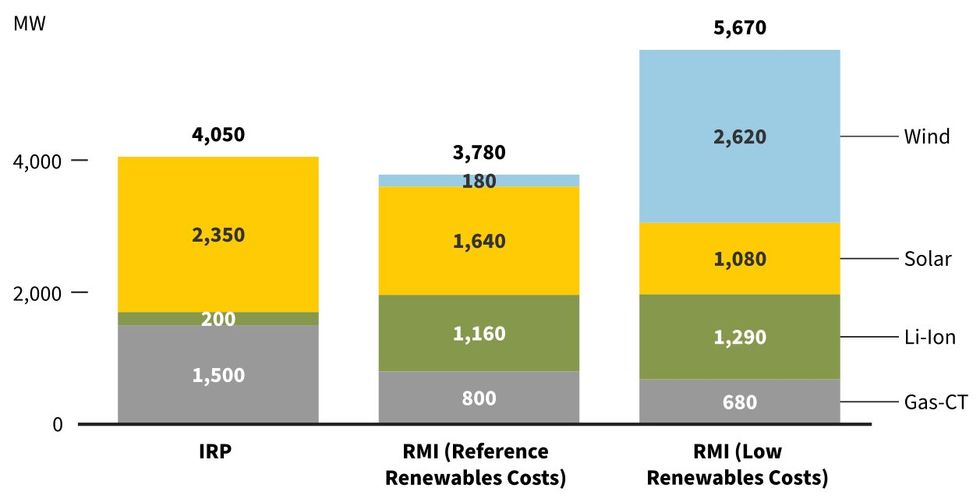Open standards in energy planning will make power and utility grids more resilient to a changing climate. That could be the topic sentence for the European Union’s increasingly open-data grid standards and open-access grid forecasts and models. A number of countries and regions around the world—the United States in particular—could well borrow pages from the E.U.’s playbook, say a range of experts Spectrum consulted. This is because transparency may be the only way to plan a robust and sustainable grid for tomorrow that taxpayers and communities will get behind today.
Modeling grid supply, demand, and solutions underpins such planning. However, commercial power and gas utilities—especially when pushing their own internal energy projects and products—often cloak their models and forecasts in proprietary data and plans inaccessible to those outside the utility. Such scrutiny-averting tactics, some experts say, lead to more costly infrastructure, squander opportunities for cleaner energy, and reduce public acceptance of system upgrades such as transmission lines and power plants.
“Companies get away with bad planning, hiding their cherry-picked assumptions in models nobody can see. This erodes confidence and costs consumers dearly,” says Tom Brown, an energy-modeling expert. Brown leads the Department of Digital Transformation in Energy Systems at the Technical University of Berlin.
That skeptical take appears to be gaining traction within Europe’s official bodies, boosting pressure to use open-source models by both project proponents and the organizations that coordinate the continent’s electricity and gas networks. This week a European Commission–funded study from the Copenhagen School of Energy Infrastructure is expected to issue a final report concluding that open-source codes can—and should—underpin official 10-year plans prepared for Europe’s gas and power networks.
The Copenhagen findings affirm a forceful endorsement of open modeling by the European Scientific Advisory Board on Climate Change in March. “Transparency of market and network models and calculations is key to ensuring public scrutiny of political investment decisions,” the independent 15-member council told the European Commission. As a result, it stated, the “traditionally closed and proprietary nature of energy system planning…is no longer fit for purpose.”
Competing approaches entail competing standards
So far in the United States, energy company use of open-source modeling is limited, and energy regulators are not yet pushing it, according to experts contacted by IEEE Spectrum. However, some state regulators are mandating that utilities provide access to the data and tools required to scrutinize proposals for new ratepayer-financed power lines, power plants, and pipelines.
The Copenhagen research started with a wider task: identifying potential upgrades to the methodologies behind Europe’s biennial energy network plans. Europe’s integrated gas and power planning on a continental scale already puts its process far ahead of most jurisdictions—particularly the United States, which has no national process for energy-network planning. Still, the European Commission wanted an outside check on whether network planners were using the latest knowledge and meeting updated legal requirements.
Shifting toward open-source modeling stood out as an important opportunity because open tools have improved significantly, says Christine Brandstätt, the economics professor who led the Copenhagen School’s STEERS (Smart and Efficient Energy System Integration) project.
The Rocky Mountain Institute has shown what outsiders can do with open-source tools—even if grid planners don’t throw open the doors.
Take power-system modeling. Brandstätt’s team found over half a dozen open tools that, in their estimation, rival commercial software. Those include Antares-Simulator, created by French transmission-system operator RTE Energy and released as an open-source tool in 2019, and the Python for Power System Analysis (PyPSA) code codeveloped by Brown.
PyPSA also got a mention in guidelines for assessing hydrogen projects, issued earlier this month by the European Commission’s Brussels-based Joint Research Centre. The JRC recommended use of open tools by promotors seeking to win a spot on the Commission’s list of priority projects—a prerequisite for European cofinancing.
STEERS found ample advantages to adopting open models. One is accelerated improvement in energy-system models when a broader community can validate their simulations. For example, experts at electrolyzer manufacturing firms might suggest tweaks to codes to better capture how hydrogen equipment functions—advice that’s precluded when outsiders can’t peek under a simulator’s hood.
Using black-box models also represents a missed opportunity to strengthen the acceptance of infrastructure proposals that check out, and to identify mistakes in studies that don’t.
Open modeling can also identify oversights or deliberate omissions. That could help the European Commission prioritize funding projects that boost energy efficiency over projects that add production, notes Brandstätt.
Europe’s network planners have already begun using open tools. The European Network of Transmission System Operators for Electricity (ENTSO-E) uses Antares-Simulator when evaluating some regions of Europe’s grid, such as Central Europe. It is, for the first time, adopting open tools to craft demand projections for its current network study. And Brown says expanded input data released by ENTSO-E, and its counterpart for gas networks, marks a “big improvement” in transparency.
Still, Brandstätt says the network planners “have a ways to go,” rating their process as “a weak 5 out of 10.” One obvious move for ENTSO-E, she notes, would be to extend use of Antares-Simulator to analyze all regions.
Edwin Haesen, ENTSO-E head of system development, says the organization supports open-source tools. He says shortcomings currently limit open models’ role in the “chain of tools” that yields Europe’s 10-year network plans, citing “drawbacks in functional requirements and uncertainties in support.” But he says such limitations may be overcome through dialogue that spotlights the network planners’ needs.
Some North American regions move toward open data
In North America, experts cite a few moves toward open tools, such as the U.S. Energy Information Administration’s prioritization of open tools under agency head Joseph DeCarolis, a longstanding member of the “openmod” energy-modeling initiative. And the long-range forecast released last week by the Calgary-based Canadian Energy Regulator, which projects that oil production could plummet by 2050, used PyPSA for its grid modeling.
The most significant transparency trend west of the Atlantic, however, is regulators empowering ratepayers and other grid stakeholders to peek over their utilities’ shoulders and tinker with the proprietary models they employ.
Aaron Schwartz, senior associate in the carbon-free electricity practice at the Rocky Mountain Institute (RMI), says Hawaii has been a leader. Last year, Aloha State regulators ordered utilities to open access to modeling tools after a petition from environmental groups, municipal governments, and the solar trades.
California’s utilities commission, meanwhile, provides extensive descriptions and data for the future power-generation portfolios used to plan transmission-grid expansion. And it has provided public access to the RESOLVE model used by agency staff.
Kentucky regulators discovered the state could do without nearly half of their utilities’ proposed gas-fired generation—and still shutter coal plants faster.
Schwartz’s colleague Lauren Shwisberg points to Arizona, where regulators recently required utilities to make licenses available for stakeholders who wish to access relevant commercial models.
RMI’s December 2022 report, Power Planning to the People, documents tangible benefits from expanding access, such as a 2020 case from New Mexico where access trimmed fossil-fired power generation.
Albuquerque-based utility Public Service Company of New Mexico (PNM) had proposed new gas-fired generation to help replace the San Juan Generating Station, infamous as the state’s largest polluter. After Arizona regulators ordered PNM to hand out licenses to the models it used, intervenors showed that renewable energy could cost-effectively replace all of the aging coal plant’s output.
Within months PNM had lined up agreements to purchase almost 1 gigawatt of solar power. The solar farms are being built within the local school district, replacing tax revenue generated by the coal plant. And PNM’s embrace of renewables likely inspired fresh thinking among the utility’s peers, according to the progressive Institute for Energy Economics and Financial Analysis.
RMI’s report also shows what outsiders can do with open-source tools—even if grid planners don’t throw open the doors. The RMI team independently assessed Kentucky’s needs after Louisville Gas and Electric and Kentucky Utilities proposed a mix of gas and renewables to meet incremental demand through 2035. RMI plugged the limited data the utilities released into the free GenX online power system model, and found that Kentucky could do without nearly half of the proposed gas-fired generation—and possibly even less [see chart below].

They also showed that the state could shut down coal plants faster—something Schwartz says the Kentucky utilities subsequently proposed.
Schwartz says the Kentucky case shows that “meaningful analysis” is possible using publicly available data and open-source models. But he stresses the challenges noted in the report, and its call to regulators to “increase stakeholder access to and influence over modeling.”
As Schwartz wrote in a December 2022 blog post: “Stakeholder participation has the potential to drive greater utility accountability and more equitable planning outcomes. But to unlock this potential, stakeholders need the right tools for the job.”
- Will Shuttering Coal Plants Really Threaten the Grid? ›
- How Russia Sent Ukraine Racing Into the “Energy Eurozone” ›
- Can the U.S. Grid Work With 100% Renewables? There's a Scientific Fight Brewing ›
- The Complex Calculus of Clean Energy and Zero Emissions - IEEE Spectrum ›
Peter Fairley has been tracking energy technologies and their environmental implications globally for over two decades, charting engineering and policy innovations that could slash dependence on fossil fuels and the political forces fighting them. He has been a contributing editor with IEEE Spectrum since 2003.


